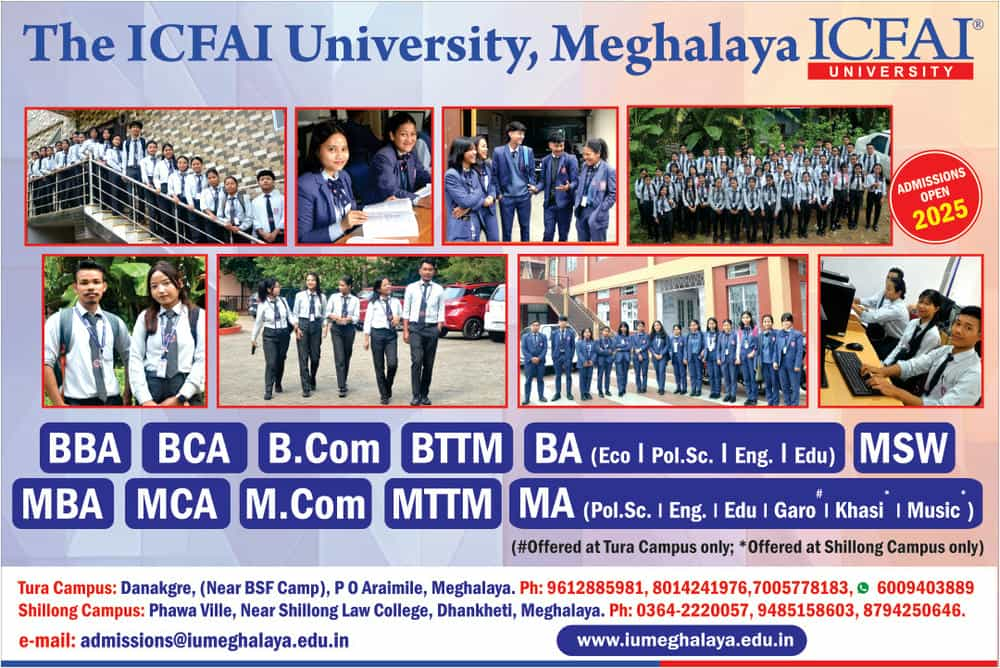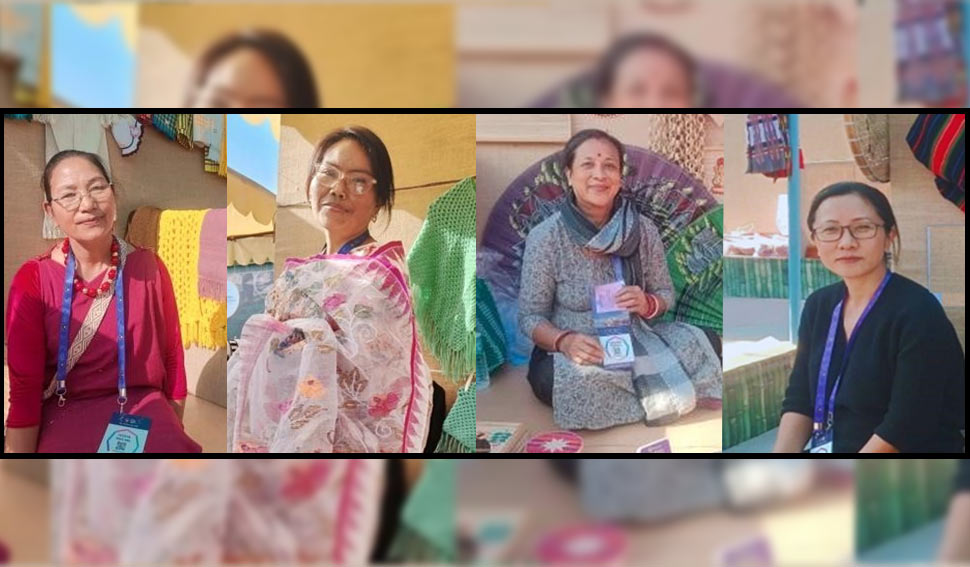Ashtalakshami 2024: Celebrating Northeast India’s women artisans and their craftsmanship

In the vibrant heart of Northeast India, women from diverse states take center stage at Ashtalakshami 2024, highlighting their unwavering dedication to preserving the region’s rich handloom and handicraft traditions. Despite personal and societal challenges, these women are crafting a future of empowerment, blending heritage with innovation. Through their intricate textiles and handmade creations, they not only honor their cultural roots but also pave the way for economic independence and progress, proving that tradition is a powerful catalyst for change.
Cecilia Wanlang’s story in Meghalaya is a powerful example of how craft and community can drive transformation. At 51, she overcame early hardships and isolation by joining a Self-Help Group (SHG), which provided both emotional and financial support. Through the SHG, Cecilia rediscovered the art of handloom weaving, a craft passed down through generations in her family.
Cecilia specializes in weaving with Eri silk, a prized material in Meghalaya known for its cultural significance. Ryndia, a traditional handwoven fabric made from Eri silk, holds deep meaning for the Khasi community. The intricate production process includes raising silkworms, sun-drying cocoons, degumming, hand-spinning, and natural dyeing. The fabric’s off-white, maroon, and mustard plaid design symbolizes Khasi heritage. With exposure through platforms like Ashtalakshmi, Cecilia has expanded her craft, introducing new colors and techniques while maintaining the cultural essence of Ryndia. Her work has become a source of income and empowerment for women in her community. Through her efforts, Cecilia is preserving Meghalaya’s rich handloom traditions, promoting sustainable livelihoods, and ensuring the continued legacy of Eri silk for future generations.
Kongam Romicha from Manipur stands at the forefront of a movement to preserve and promote the rich handloom heritage of her community. Born into a world where handwoven textiles were not just a way of life but an art that embodied the spirit of her people, Kongam’s journey has been one of resilience and dedication. Despite facing personal and financial hardships, she devoted herself to mastering the craft, with a passion for ensuring that the intricate weaving techniques of her ancestors would not fade into obscurity.

In recognition of her tireless efforts, Kongam was awarded the National Merit Award in 2017-18, a testament to her unwavering commitment to preserving the traditional artistry of Manipur’s textiles. A central focus of her work is the production of Wangkhei Phee, a GI-tagged textile of great cultural importance in Manipur. Made from high-quality cotton and natural dyes, this handwoven fabric is known for its vibrant colors and intricate patterns. Traditionally worn by women during marriage ceremonies and festivals, Wangkhei Phee symbolizes elegance and status. The delicate, see-through texture allows decorative jewelry to be seen through, adding to its beauty. Kongam’s dedication ensures that these traditional weaving techniques continue to thrive, keeping this cherished textile alive for future generations.
Through her passion for bamboo crafts, Sanchita Debnath in Tripura has become a symbol of empowerment for women from struggling communities. After marrying, Sanchita became involved in her husband’s bamboo craft business. However, she quickly realized that her true calling was not just in crafting beautiful bamboo products but in helping others create livelihoods for themselves.
Determined to make a difference, Sanchita began training women in her community, teaching them the intricate skills of bamboo weaving. With her husband’s support and the help of a dedicated team of women, Sanchita has built a sustainable model that not only preserves the traditional craft but also creates economic opportunities where they once didn’t exist. Every day, Sanchita works alongside 40 women, guiding them through the nuances of bamboo weaving and helping them perfect their craft. The bamboo crafts of Tripura are renowned for their elegance, durability, and intricate designs. From chairs, tables, and bags to hand fans and interior decor items, these products are not just highly valued locally but also exported worldwide. Made from locally sourced bamboo, each piece reflects the rich cultural heritage of the region. Through her work, Sanchita is not only preserving the art of bamboo weaving but is also contributing to Tripura’s economy, uplifting women, and building a brighter future for her community.
At 46, Irene Chhangte of Mizoram carries forward her community’s legacy, collaborating with a group of women from her remote village. Since 2005, Irene has been dedicated to weaving, with the women in her group starting their day at 4 am, weaving for a few hours before tending to household duties. Despite being small, the group of 10-20 women creates textiles that reflect Mizoram’s cultural richness. They produce handwoven table runners, bags, and Mizo puans under Irene’s venture, Weave Me More Dreams. Irene is passionate about reviving traditional Mizo handloom textiles while empowering artisans in Mizoram and Northeast India through fair wages, skill development, and market access. By blending traditional techniques with contemporary designs, she creates luxurious handwoven puans, apparel, tote bags, and home decor. Irene’s work merges heritage preservation, innovation, and inclusivity, ensuring the crafts of Mizoram are passed down for generations. With government support, Irene’s efforts have gained recognition beyond her village, including opportunities to showcase their crafts in Delhi. This exposure has helped expand their market base and bring recognition to their intricate designs. For Irene, this journey is not just about livelihood—it’s a mission to empower women and preserve the cultural heritage of Mizoram.
Together, these women are more than just artisans; they are pioneers of change. With creativity and resilience at their core, they embody how the preservation of cultural heritage can lead to new opportunities and growth. Their journeys serve as a powerful inspiration, not only to their communities but to the world, proving that the blend of tradition and entrepreneurship holds the key to empowerment and transformation.

Leave a Reply